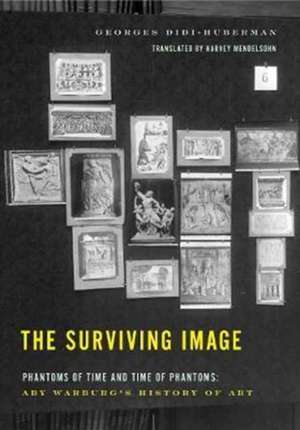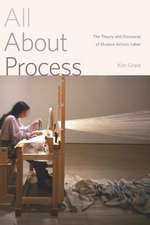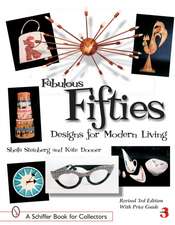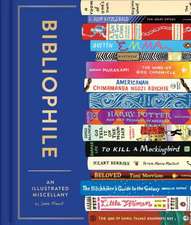The Surviving Image – Phantoms of Time and Time of Phantoms: Aby Warburg`s History of Art
Autor Georges Didi–huberman, Harvey Mendelsohnen Limba Engleză Paperback – 8 ian 2018
The Surviving Image, originally published in French in 2002, is the result of Georges Didi-Huberman's extensive research into the life and work of foundational art historian Aby Warburg. Warburg envisioned an art history that engaged with anthropology, psychoanalysis, and philosophy in order to understand the "life" of images. Drawing on a wide range of Warburg's unpublished letters and diaries, Didi-Huberman demonstrates unequivocally the complexity and importance of Warburg's ideas and the ways in which his legacy was both distorted and diffused as art history became a "humanistic" discipline. The Surviving Image takes Warburg as its main subject but also addresses broader questions regarding art historians' conceptions of time, memory, and symbols and the relationship between art and the rational and irrational forces of the psyche.
Faithfully and thoughtfully translated by Harvey Mendelsohn, this first English-language edition of Didi-Huberman's masterful study of Warburg is a stirring and significant treatise on the philosophical nature of art history.
Preț: 296.23 lei
Nou
56.68€ • 59.19$ • 46.81£
Carte disponibilă
Livrare economică 25 martie-08 aprilie
Livrare express 08-14 martie pentru 47.12 lei
Specificații
ISBN-10: 0271072091
Pagini: 432
Dimensiuni: 178 x 254 x 29 mm
Greutate: 0.73 kg
Editura: Penn State University
Notă biografică
Georges Didi-Huberman is on the faculty of the École des hautes études en sciences sociales in Paris. His books in English include Fra Angelico: Dissemblance and Figuration; Invention of Hysteria: Charcot and the Photographic Iconography of the Salpêtrière; and Confronting Images: Questioning the Ends of a Certain History of Art, the last also published by Penn State University Press.
Descriere
Originally published in French in 2002, examines the life and work of art historian Aby Warburg. Demonstrates the complexity and importance of Warburg's ideas, addressing broader questions regarding art historians' conceptions of time, memory, symbols, and the relationship between art and the rational and irrational forces of the psyche.












